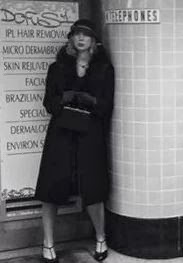ANAM Musicians
Tuesday 18 March
A heap of kids came out to play today. My god! (whomever she
might be) could they play! They tackled some of the most difficult writing and
the little (if you exclude the four trombones!) buggers made it look and sound
easy as true experts do. The Boss, Paul Dean, was in the audience but that didn’t
seem to concern them. Afterwards, any of them within arm’s reach got a bear hug
from him such is his ferocious reputation.
Jennifer Timmins and David Shaw produced a masterful playing
of Ecuadorian Diego Luzuriaga’s Tierra...Tierra
for two flutes (1992). The long, mellifluous opening notes gave way to the cold
winds of the pampas then the icy winds of the plains further Antarctic-wards.
Raptors wheeled and screamed in huge sweeping arcs (or so it seemed to me).
Simply wonderful playing.
Nigel Westlake’s Omphalo Centric Lecture for two marimbas (1984 – 2007) was, inevitably, reminiscent of Ross Edwards’ Marimba Dances. This piece had virtuosi Thea Rossen, Kaylie Melville, Hamish Upton and Hugh Tidy, wielding multiple mallets per hand, to produce music of extraordinary richness and colour as the four musicians shared two piano-sized – and a few un-tuned – instruments. The dynamics were beautifully controlled; the cross rhythms, subtle.
Peter Maxwell Davies Presto Molto from Sea Eagle (2002) brought French Hornist Alden Cai out in white tie
and black-trimmed white tails. Was he hedging his bets – ‘look at me don’t
listen to me too closely’? Could he play the thing? Yes. Did he understand P M
Davies? Yes. Could he handle the tempestuous, virtuosic writing? Yes. Would he
have sounded even better in jeans and tee shirt? Yes, because we wouldn’t have
been wondering what the clobber was for. He did look terrific in it but not at
1 pm on a Tuesday arvo, Alden.
Sergei Prokofiev’s Five Sarcasms Op. 17 for piano (1912 –
1914) is not for wimps. Julia Hastings is no wimp. She attacked this very
difficult work – that is all the more difficult because it takes a sardonic
look back at Rachmaninov’s romantic writing – with skill and vigour. Not once
did we think she had failed to conquer it at any level, technically or intellectually.
She resisted the current fad of over-pedalling to produce sounds of clarity and
wit. Her mastery of single-note melodies over rich, smooth, pedalled arpeggios
was delicious. South Melbourne Town Hall loves the big sounds. It loves Julia’s
big piano.
 |
| Prokofiev Emanuel Lasker: Denker Weltenbürger Schachweltmeister , Forster, Hansen and Negele eds. Berlin, 2009 p.139 |
Anton Bruckner’s Three Motets arranged for four trombones (1869
– 1892) brought four big trombones to the stage. This quartet was superbly balanced;
the highly chromatic locus iste was
rich and warm. The men (Ben Lovell, Iain Faragher, Ashley Carter and Matthew
McGeachin) gave each phrase time to breath and they made excellent use of the
hall’s two-second decay resonance. This performance seemed to emerge from deep
in their souls; it was dark chocolate ganache – with definition.
 |
| long, smooth choral lines |
Some ninny (Peter Garret) tried to close this joint down a
few years ago. Is ANAM elitist? Too right! Should it be? Absolutely! Before
anyone tries that trick again they should get their arse down there and listen
to Australia’s best young musicians.











